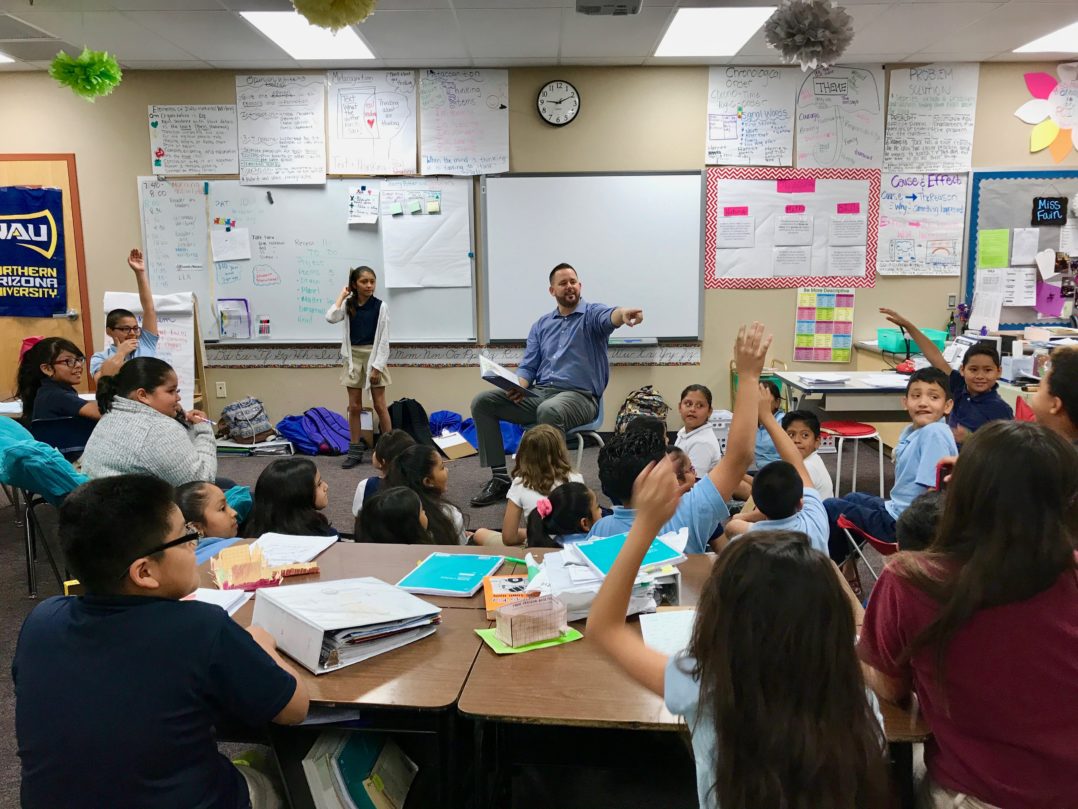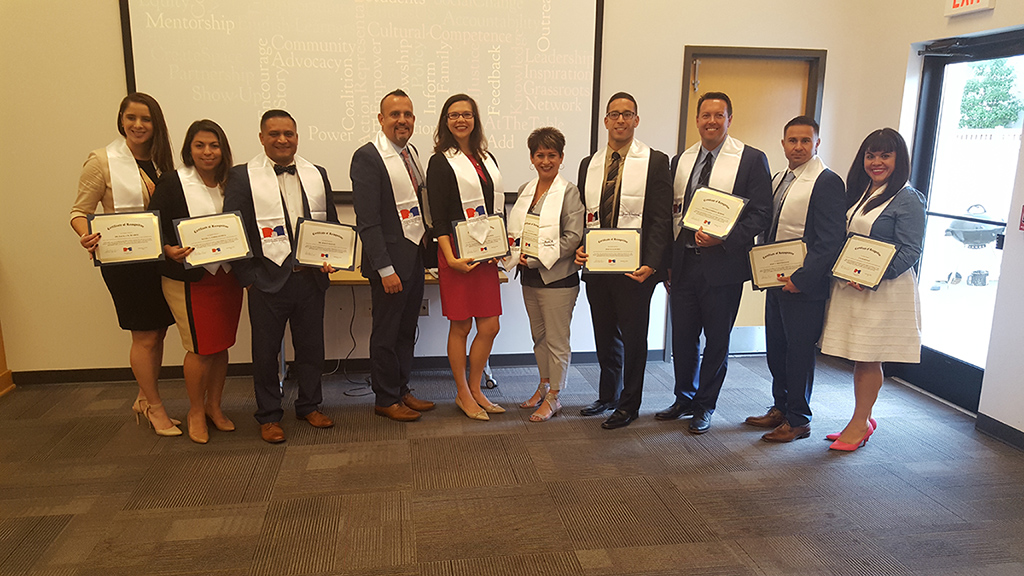Former Arizona State Lawmaker David Schapira Explains How Arizona Can Craft a More Equitable Educational System
With its massive income gaps, large Latino and English learner populations, and dwindling school funds, Arizona is a hotly contested state for education issues during this year’s midterms. So hot in fact, that this past August, Arizona’s supreme court voted to remove from the ballot Proposition 207, or InvestInEd, which would have increased income taxes for those making more than $250,000 a year and allocated the revenue to teacher salaries and school operations and maintenance purposes.
But there are plenty of other ways Arizonans can be thinking about education as they go to cast their ballots. In addition to posting a voter education guide from the nonpartisan educational nonprofit Expect More Arizona, Progress Report decided to interview a former lawmaker and school teacher who spent years advocating for a wide range of educational issues.
Former Arizona State lawmaker David Schapira’s work was rooted in his own experience teaching in the Arizona public school system, a role he took on after his studies at George Washington University in Washington, DC, where he also worked on Capitol Hill. His frustrations with the lack of support for education from Arizona’s political leaders prompted him to join several education advocacy campaigns and eventually run for a seat in the Arizona State House of Representatives in 2006.
At 26, Schapira successfully campaigned as a Democrat in a Republican district, against a 10-year Republican incumbent and went on to serve in the Arizona state legislature for six years. He spent four of those years as the ranking member of the education committee, and during his last term, he served in the Arizona State Senate, where he was elected to be the leader of the Democratic Caucus. He also served from 2011-2015 on the Tempe Union High School District Board and from 2015-2018 on the Tempe City Council, working primarily on an early childhood initiative for low-income students without access to preschool.
As a result of this advocacy, Tempe is now the first city in Arizona to endeavor to offer all its young residents access to high-quality early childhood education. More recently, Schapira has worked as the Assistant Superintendent at the East Valley Institute of Technology, a public school district that works with local high schools to provide Career Technical Education classes at their campuses and at centralized campuses as well.
Q: With InvestInEd off the ballot, what would you say are the hottest education issues for the midterms in Arizona?
A: The only education issue on the ballot now since the InvestInEd Initiative was kicked off by our state’s supreme court is school voucher expansion. In some states, those vouchers might be helping students who otherwise would not have access to a quality education, but in Arizona, the data shows that the demographics at private schools have the same demographics they did when vouchers and private school tax credits were created in the 1990s. They are largely White and high-income families, who are still sending kids to private schools even with the voucher.
In other words, with a voucher system, we are subsidizing White, high-income families as they send their kids to private schools—people who can afford it already. We need voters to vote “no” on Prop 305 to prevent expansion of this ineffective program that does little other than drain money from public schools.
What is historic about this ballot proposition is that this private school voucher bill was passed by the legislature. Arizona’s constitution has a provision that allows voters to refer a legislative measure passed by the legislature to the ballot. This is to stop it from becoming law. The nonprofit organization Save Our Schools, made up mostly of mothers and educators, collected over a hundred thousand signatures in 90 days to refer the bill to the ballot. It is called Proposition 305. A “yes” vote allows the bill expanding private school vouchers to become law, and a “no” vote prevents it from becoming law and protects public schools.
That is a huge issue here right now because equity issues in this state are so acute. The disparities between high-income areas and low-income areas are very wide when it comes to all kinds of education quality metrics, whether it is class size, course offerings, or college attendance. Private school vouchers widen opportunity gaps even further.

Q: If you could create a perfect or more equitable situation in Arizona, what would you do? What would your five-year plan look like?
A: Oh gosh, that is a long conversation. Our biggest issue is that this state has a dramatic teacher crisis. Last year 52.8% of the positions that needed to be filled were either unfilled or filled by someone who was not properly certified to teach that class.
Even with this year’s pay increase, Arizona is still in the bottom six to seven states for teacher salaries for elementary, middle school, and high school educators. If we are going to reduce class size and increase course offerings, as well as have a culturally responsive education system where teachers are able to learn and meet their students’ needs, we have to end the teacher crisis. We have more certified teachers than there are teaching positions. We just don’t have enough people willing to take a “vow of poverty” to teach our kids. That is the most pressing issue without a doubt. Nothing else is going to matter if there is no teacher in front of the classroom.
I think we also have a lot of whole-child issues to deal with. We have acute poverty in some parts of the state that has really gone unaddressed by this legislature, and we are not providing the necessary resources to address the needs of our students. Like I said, we have a huge gap in Tempe between preschool access rates among Black, Latino, and Native American students, and that of White students. About 80% of White students attend pre-school compared to 50% of the other groups so it is easy to see why achievement gaps exist in the early grades when you consider that some students have a two-year head start. It really is just a lack of opportunity.
Q: How does Arizona stack up against other states in terms of poverty?
A: We have kids living on dirt floors with no plumbing, no electricity—In rural and urban areas. We have some of the wealthiest people in the world living in places like Paradise Valley, five miles away from abject poverty.
Q: What civic engagement highlights can you share from this year? What groups do you know that are trying to combat these issues?
A: A lot of groups are coming together—advocacy groups like LUCHA and your group, UnidosUS –are working on the ground here on education policy. We have new groups like Arizona Educators United and Save Our Schools that are doing amazing organizing work as well. We have definitely seen some of the traditional progressive groups as well.
Q: Apart from voting, what do you encourage Latino families to work on? How can we make them feel more empowered outside of the midterms?
A: In some districts, especially some historically underserved communities, families are becoming more active with their school district governing boards. They are showing up to board meetings, not only to hold the board accountable, but also just to know what’s happening with education in their community. That is a great place to get updated information about the implementation of the Every Student Succeeds Act and all kinds of things that impact their kids.
-Author Julienne Gage is the senior web content manager for the Progress Report.



